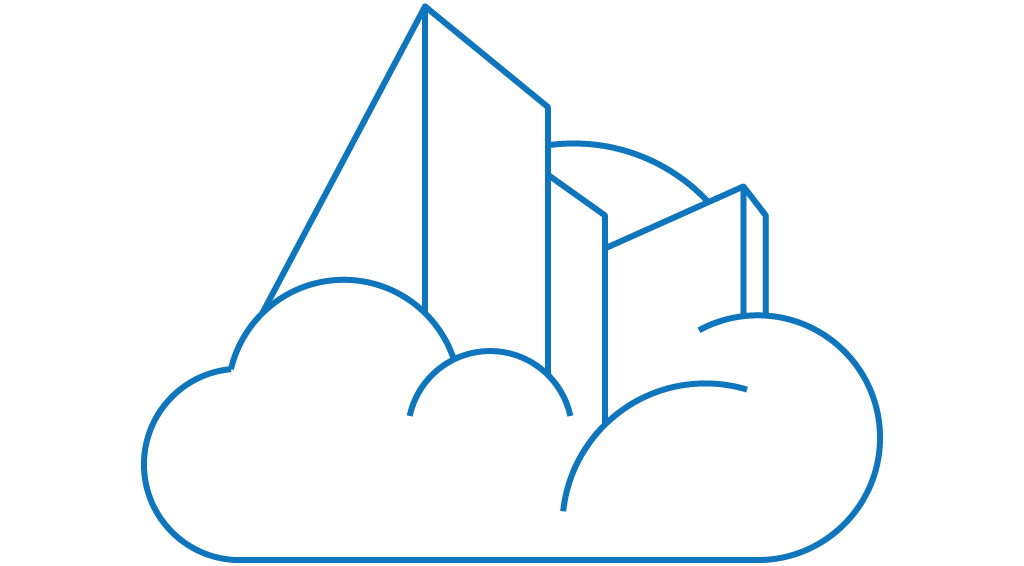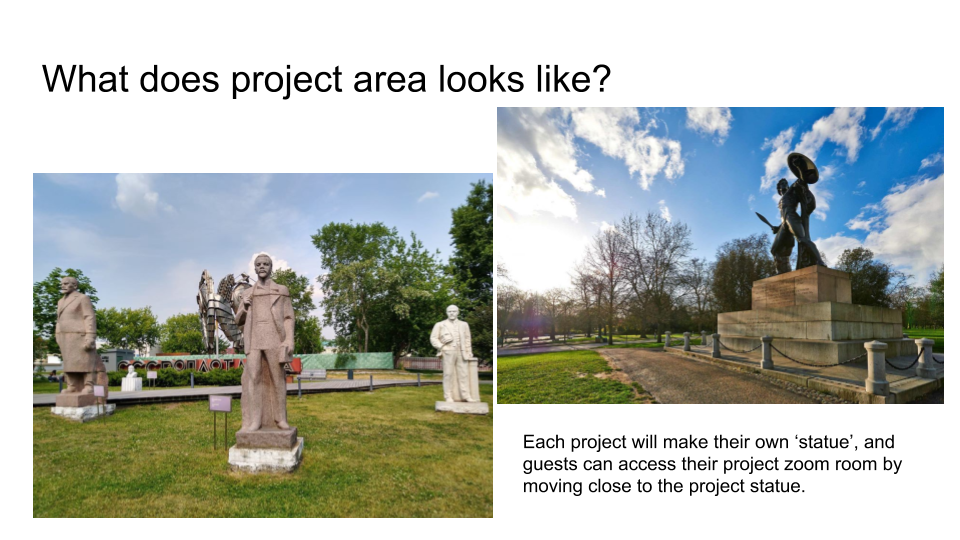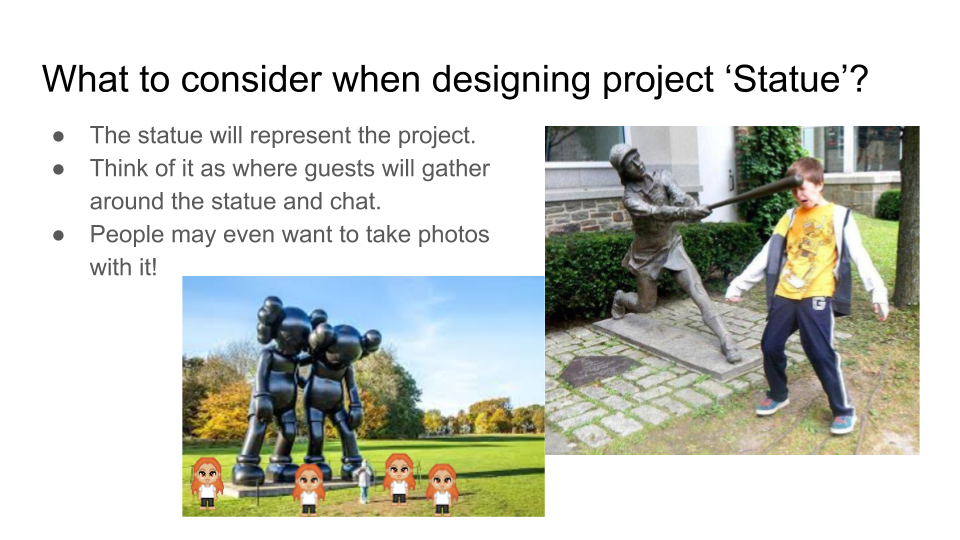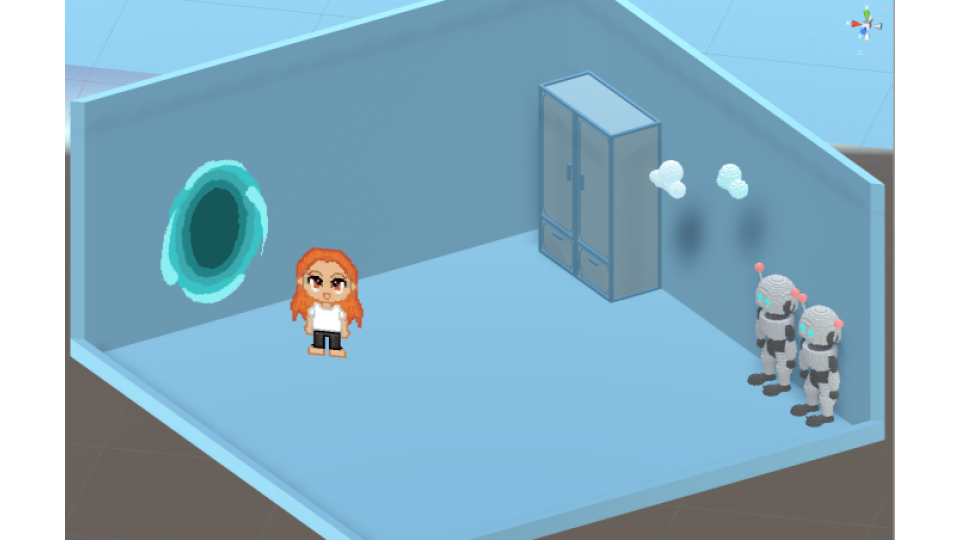
Week 10: First Contact
New World Order
On Monday afternoon we met again to try stress testing using the headless client in a newly organized virtual festival space. Last week we found that the way in which our world was set up meant that when greater than 300 guests would join the festival, no matter what space they were in, guests would begin to experience severe amounts of lag that prove detrimental to the experience of the play.
This is because the whole space was directly connected to itself and hosted on a single server. So if 100 people were in the Visual Story Theatre, BVW Carnival, and Project Park each, they would all be experiencing lag. If we factor in the number of students and faculty who may be concurrently within the space, that is already severely restricting the number of guests we can possibly accommodate.
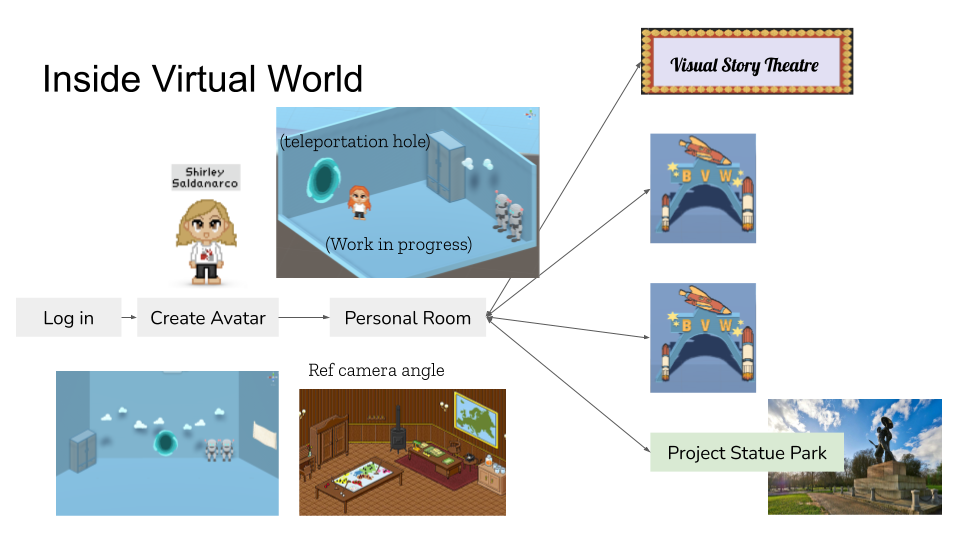
Our new global structure eliminates the shared central lobby space in favor of a private, local, personal room from which each of the other areas of the festival can be accessed. After going through the onboarding animation sequence detailing the experience, they will create their avatars and be dropped into this room. From here they will go through a portal that they may choose between two BVW areas, the Visual Storytelling Theatre, and the Project Park, each hosted on a different server. Each one of these will support up to 180 guests at any given time.
We are limiting each area to 180 guests because we found that this is just under our safety number for when people begin to experience lag. By cutting under this, we can ensure that everyone should be able to maintain a steady connection to the event. We’ve split BVW into two spaces because we anticipate this being a ‘hot zone’. Doing this spreads the load across two rooms. By having these four distinct rather than connected areas, we can now support 720 people each session simultaneously, which is greater than what we were anticipating at 500.
If a guest attempts to join an area that is currently at 180 guests, they will not be able to connect and will need to go somewhere else instead. Because we are still limiting the number of possible guests per session under that 720 number, though, we are ensuring that gridlock doesn’t occur where each room will fill up, locking anyone out.
After stress testing with this new system, we found that it was able to support 200 concurrent users very stably, so we are confident in this new direction.
Space Updates
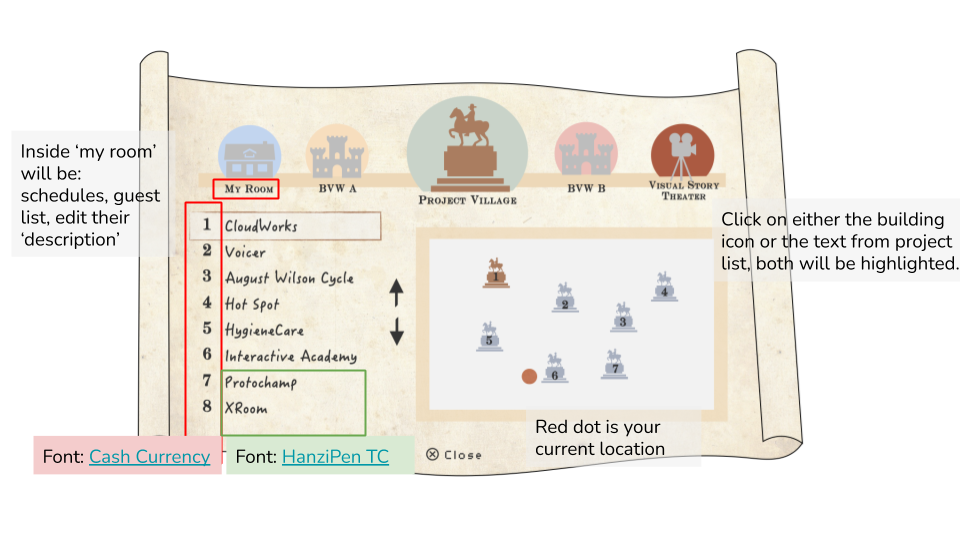
We’re making a few changes to the BVW space itself as well, and implementing the map to go along with it. The map lists off each of the projects available within the space and where to find them in comparison with your position. Soon this will be fully interactive and allow you to click on each project name to highlight it on the map and see where you need to walk to from your current location.
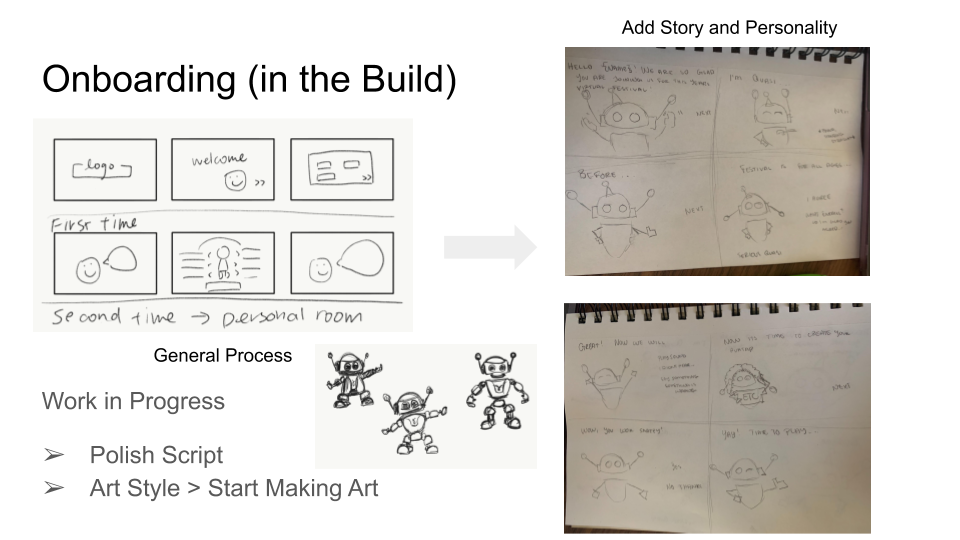
Before guests are able to join the world, we are planning a short onboarding process to welcome them in and we have prepared the script for that. It will feature Quasi from the ETC lobby to introduce them to the space and the procedures. He’ll ask them for their log-in information and say hello, and give them a heads up about our behavior policy, ensuring that they know to respect everyone else in the festival.
Semester Project Touch-in
In the first half of the week we had meetings set with each semester-long project to touch base about expectations for the festival, both on our side and theirs. We haven’t gotten a chance to address everyone directly yet and had only heard what everyone was doing through their half presentations. This was a great opportunity to hear from each team what their deliverables will be and how they can best showcase their work in their Zoom calls and on the livestream. For a few teams, this also raised the question of how to navigate around their NDA’s, and we are waiting to hear back from their clients about how we can address their concerns throughout the event.
From each team we are asking for a 3D voxel art statue to represent their projects. This statue will be what guests will walk up to in order to launch a Zoom call and talk with the team. The ultimate appearance of each of these statues can be determined by the projects themselves. We are asking for these pieces before Thanksgiving break so that we can begin populating the project area before the BVW jury submissions come in. We’ll also be asking for the project videos from each team, but we won’t be able to get those until the week of the festival.
For the livestream, one representative will join a Zoom call to talk about their projects for about ten minutes. They’ll show their video and answer some questions that we will have prepared and had approved by them in advance of the festival. This way they will have a sense of what to expect and prepare some thoughtful answers.
BVW Consultations
In the latter half of the week we held consultation sessions with each BVW team as well to get them prepared for the festival. In class they are just now beginning Round 5, in which they are supposed to design an experience with the festival in mind.
This was a chance to hear some of what they were planning for the festival and gently push them into directions that would make their experiences run well, given the presentation format. All of the teams are considering multi-guest experiences, so we asked them questions about how they planned to onboard and engage with guests as they flow in and out of the sessions. We pushed them to think about how they are planning to adjust for issues of latency, length of time to learn and play, accessibility, number of concurrent users, spectators, and so on.
Because their work will be directly interacted with, as opposed to most of the semester projects, it is very important that they begin considering these issues in the very first week of the project, rather than the week of jury.
Invitations Sent
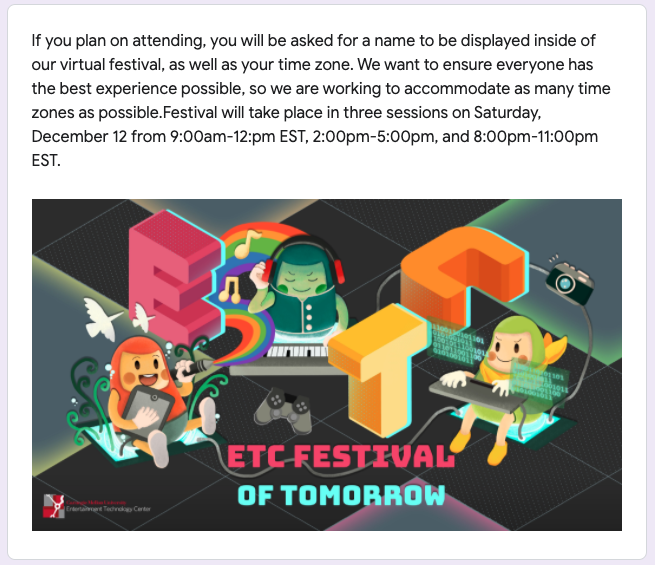
On Friday morning, our invitations were emailed out to ~3000 invited guests. We’ve already had about 100 responses so far confirming their attendance. We were worried about which sessions people would want to attend, fearful that one session may get gobbled up by everyone, leaving one particularly quiet. It’s early in the process now, but responses are roughly equal between the three sessions so far.
Navigation Playtest
On Friday evening, we held another playtest to try out our broadcasting system and inter-area navigation. We set the BVW world up with three active BVW rooms. When you walked up to the game console that you normally download the BVW games from, instead of getting the game, you receive a pop-up UI giving you a description of an item from our avatar asset list. Each room has either a hair+color, shirt+color, or bottoms+color. We had also gotten our first background musics from the sound committee to try out in the world.
For the playtest, the testers were asked to
- Join the BVW area
- Listen for a broadcast telling them which rooms to find these messages in
- Collect these messages
- Go back to their starting room
- Change their avatar to match the descriptions from the messages
- Join a Zoom call with us from one of the rooms to finish
We tested with 15 people and all but one were able to get the messages and get dressed accordingly. We ran into some issues with the volume of the music, because it could not be changed at the moment, so it was very difficult to hear what the global audio broadcast was saying. There was also confusion and frustration around how to get back to the starting room from the BVW area, because there was very little populating the environment, despite its large size, and they were forced to walk all the way from the left side to the right side of the space. They felt that they weren’t making much progress as they moved because there was very little to differentiate the space.
Moving forward from this we are going to add in a settings menu to allow them to customize their audio setting so they can fine tune their volumes. We will also be adding more elements to the environment to help guests wayfind and differentiate certain areas. Part of this will be amended by the division of the BVW area into two, cutting down the number of actual rooms and space required to fit them by a great deal, making it much quicker to move around.
Next Week
Next week we’ll be looking to do more one-on-one sessions of the experience to get some more in depth feedback and in-process thoughts from faculty and alumni playtesters. We’ll also be doing a small scale Mechanical Turk playtest to try it out before potentially committing to a full, several hundred user MTurk test.
